The first thing you see in the hallway of Ditte and Nicolaj Reffstrup’s Copenhagen home is a football table. The second is a nipple fountain by the artist Laure Prouvost. The third is the glossy sky-blue banister that snakes through the centre of the house. Colour, art, fun: the trinity of design principles that contribute to the aesthetic of their womenswear label Ganni, and this, their forever family home.
It’s situated in Østerbro, a residential area in the city centre, known for its many parks and green spots. The small neighbourhood is the oldest villa quarter in Copenhagen, built in 1865 in what is known as the historic style. “It’s a schizophrenic time period, but the architects back then had a great admiration for local crafts,” says Nicolaj. “So the house has exposed brickwork and you can see all the joints. It’s a modest house that focuses on craftsmanship.”
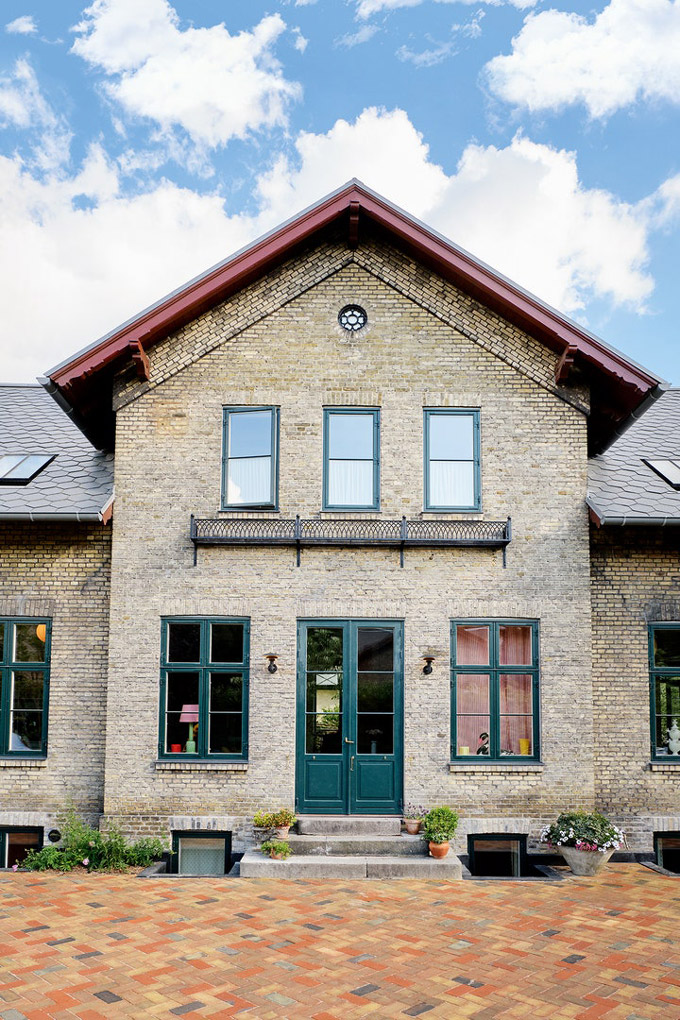
Like most Scandinavian buildings, the house has a large number of big windows and glass doors to bring in as much natural daylight as possible. “Europeans spend a lot of money on going out and having good food,” says Nicolaj, “but in the Nordics we spend a lot of money on our houses, because we spend so much time here during winter.”
The couple, who have three children—Betty Lou, 10, Jens Otto, eight and Rita Sophie, three—had a clear vision to make “the most liveable house ever for a family of five,” as Nicolaj puts it. With yellow brick and dark-green paintwork on the outside, inside, the mood is playful, with a masterful sense of colour. “Well, that’s very much Ditte’s universe,” says Nicolaj, with admiration. “She started Ganni to show that there was a more colourful side to Scandinavian fashion.”
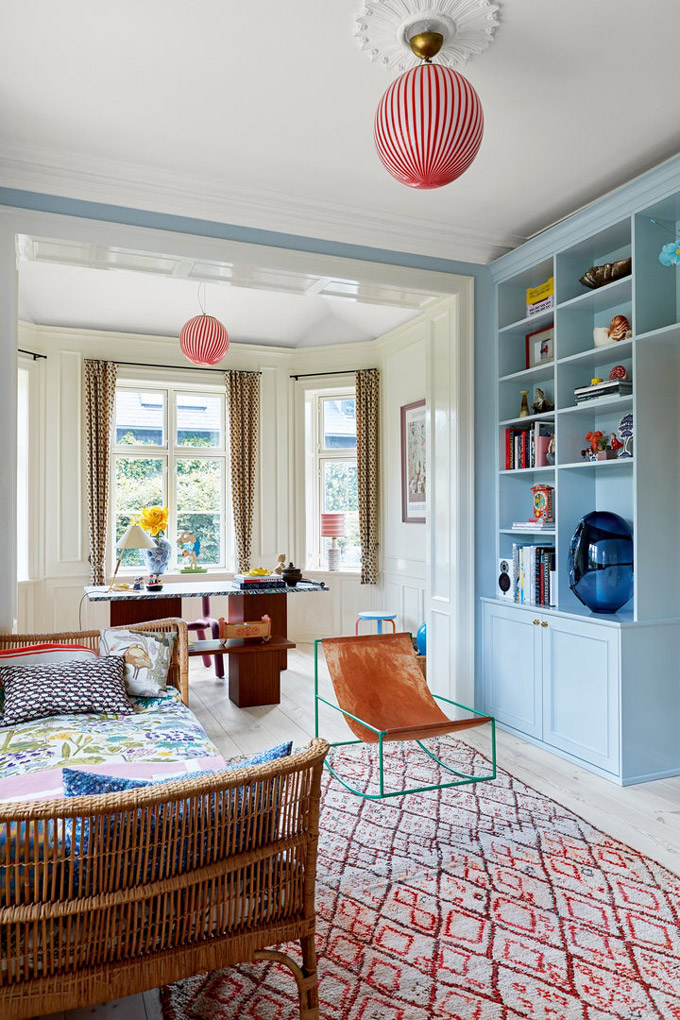
There’s a theme of pink and blue in various tones and depths on the walls (they favour Farrow & Ball paint), and floor surfaces are in terrazzo or coloured tiles. These form a backdrop for both contemporary and classic Danish design, such as the Le Klint lamps Nicolaj remembers reading under as a child, folky woven rugs and mid-century botanical-print fabrics by Josef Frank. “I think our home reflects how we are as a family, and also how we work at Ganni,” says Ditte. “It’s about contrast, mixing and matching, and new paired with old vintage pieces. There are a lot of things here that I have found in flea markets.”
The couple bought the house in 2018, after selling their majority stake in Ganni the previous year. Cleverly, they threw a big house-warming party and then spent 18 months renovating, keeping the main structure but replacing floors, building the new eye-catching staircase and adding a light-filled extension. “We tried to respect the story of the house,” says Ditte. “We didn’t want to tear any walls down to make big rooms.”
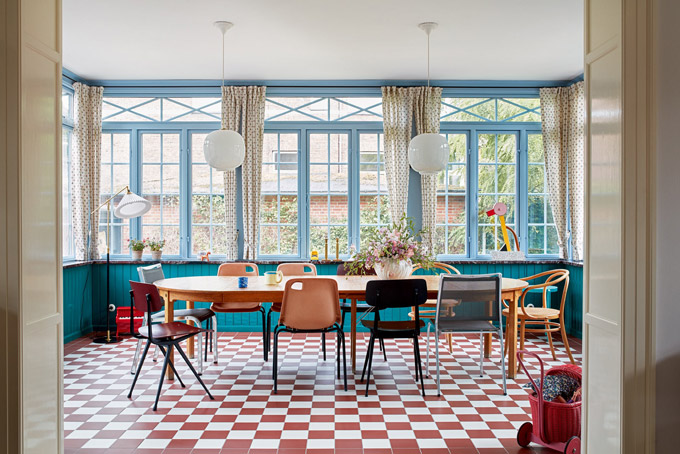
They then set to work filling the house with art and design by friends and collaborators. “Most of the art and furniture we have collected over the years is driven by the notion of relationships rather than skill or knowledge,” says Nicolaj. “We collect things from friends in our life who mean something to us. We’re not professional art collectors.”
Perhaps not, but their shared eye for all things beautiful and witty makes for a distinctive space, as entertaining as it is welcoming. Fanlights above the door in the hallway have been replaced with pastel-toned glass by Nina Nørgaard, an artist with whom they have previously collaborated for Ganni. In the living room, there is a pair of photographs by Casper Sejersen, best known for his “orgasm portraits” of the cast of Lars Von Trier’s film Nymphomaniac, a balloon installation by the Danish artist Jeppe Hein that seems to tie in all the colours of the house, and a tapestry-like oil painting that is pure, accidental art—it’s the old worktop of an artist friend, which Nicolaj spotted in his studio and asked to buy. “We see a lot of nice interiors in magazines that are super clean,” says Ditte. “I think it makes some people feel calm but for me it just feels cold. I always think you have to do what feels right for you, instead of decorating the way someone tells you.”
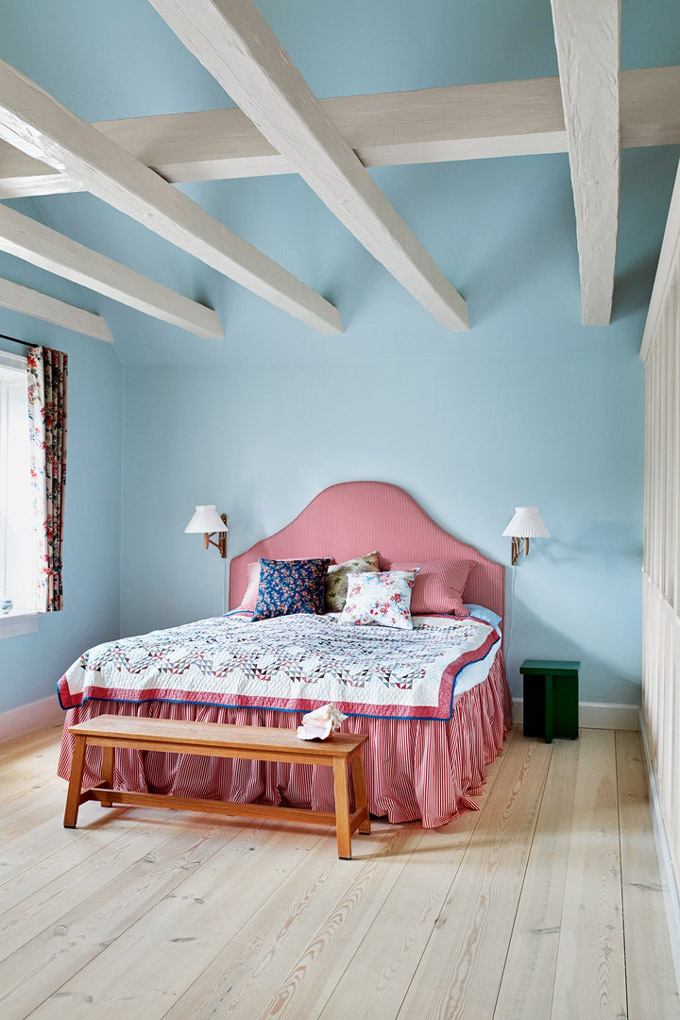
The kitchen—which is “full-on industrial”, with stainless-steel worktops on one side and lacquered mahogany cabinets inspired by French brasseries on the other—is where the family spend most of their time. “It’s our favourite space, we start and end the day here,” says Ditte. “We gather with friends who sit and have a glass of wine while we’re cooking.”
Above a marble splashback, where the coffee machine sits, is a custom-built steel and glass cabinet developed with Emanuele Stamuli, the architect who works on Ganni stores and has also worked with Prada and Acne. “It has a hint of a rainbow when the light falls on it,” says Nicolaj.
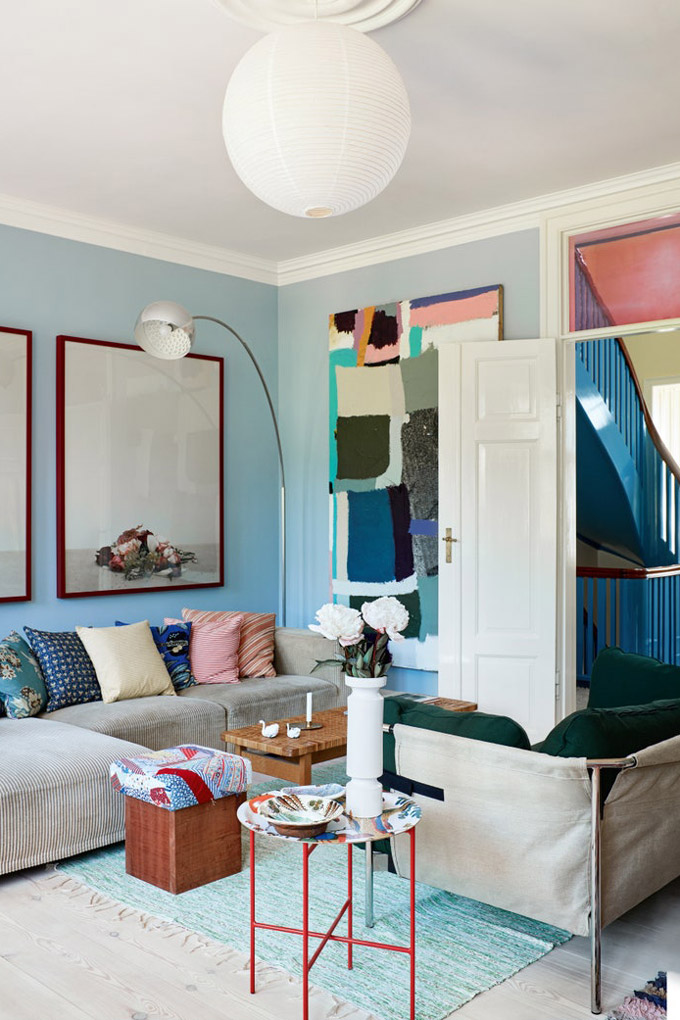
This is a family home and theirs a family business. Although they sold the majority sharehold in Ganni, they still run it, and the global pandemic has affected them. “This time has been a roller coaster—lots of ups and downs,” says Ditte. “The business part, I have to say, has been a lot of down, because we had to let some people go, which was terrible. But in another way, suddenly you feel closer to people. You take time to ask them how they are now instead of being so busy. I’ve become closer to my colleagues. I hope we can keep that and take it with us.”
They regularly throw parties in their dining room, around a mid-century table by the Danish cabinetmaker Børge Mogensen. They bought it second-hand from the parents of their friend, the jeweller Sophie Bille Brahe. “The table’s a complete mess in many ways, but that means you’re never worried about it, which is comforting when there are three kids sitting here,” laughs Nicolaj. It’s surrounded by mismatched chairs—some from their friends at the Danish design company Hay, a couple of Italian steel-mesh designs that Nicolaj bought from a restaurant and various vintage finds. “This room sums up who we are,” says Ditte. “We love having guests and we want it to be a welcoming home. It’s all about not trying to be too perfect; mixing colours and fabrics and textures—the same approach that I have to fashion. If you sense that people feel relaxed about their home then as a guest you feel welcomed into it.”
This article was originally published on British Vogue.





